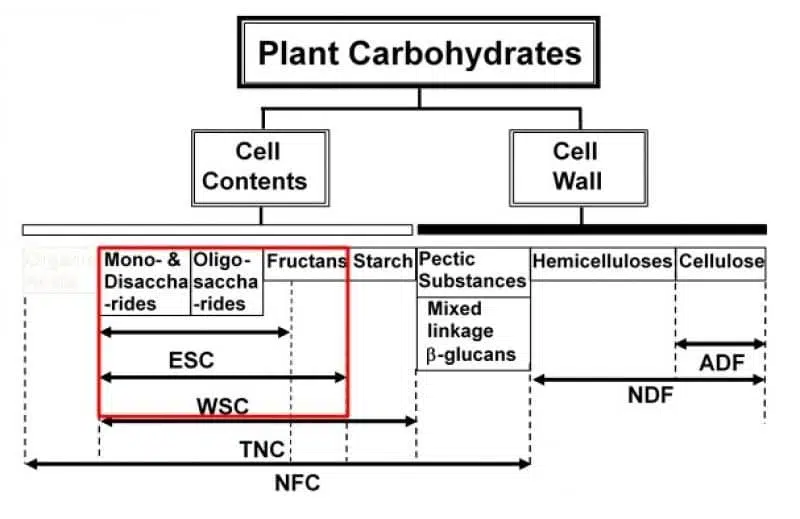Plant carbohydrates in the diet play a very important role in the production of milk solids and in particular milk fat production. There are two forms of plant carbohydrates in the diet and these include fibre and sugars as can be seen in figure 1.
There are two measures of dietary fibre that we look for in a feed test and these include Neutral Detergent Fibre or NDF and Acid Detergent Fibre or ADF. NDF is a measure of the structural or slowly digested components of a plant such as hemicellulose, cellulose and lignin. Whereas, ADF makes up a proportion of the overall NDF levels as it consists of cellulose and lignin. Fibre is important energy source used by ruminants and diet is directly linked to the amount of milk fat a cow can produce. It assists in salvia production in cows via chewing which helps maintain pH levels in the rumen due to the fact that saliva acts as a buffer. Its particle size also plays an important role, as if the particle size is too small it will ferment too quickly causing a decline in rumen pH and result in a decline in milk fat production.
Sugars in the form of Water Soluble Carbohydrates or WSC are a measure of the amount of sugars such as monosaccharides, disaccharides and some polysaccharides (mainly fructan which is a major storage carbohydrate in grasses). Sugars are important for feeding rumen microbes which are responsible for digesting fibre content and hence play a role in milk solid production.
So if you are interesting in finding out the fibre and sugar content in your feed to improve your productivity, get a feed test done today!

Figure 1. Plant carbohydrates can be divided into two sections which consist of sugars and fibre content.